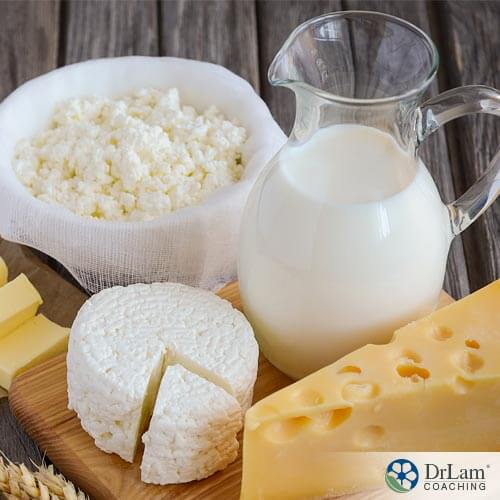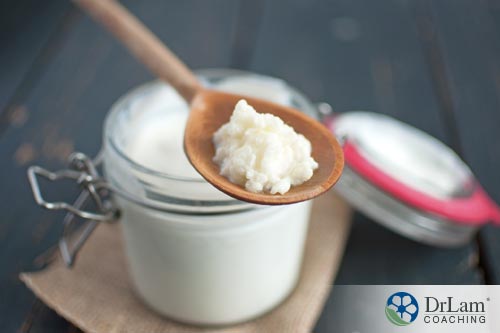 Diabetes is becoming this century’s great epidemic, along with its close companion, obesity. Type 2 diabetes was once thought to be an inherited chronic condition that cannot be prevented or cured, only anticipated and feared. If close family members had it, you thought you were doomed. But lately, many people are not only treating, but also reversing their diabetes through diet. And although there are different factors that play into diabetes risk, many studies show the importance of food in relation to diabetes, with the latest studies showing the link between dairy and diabetes.
Diabetes is becoming this century’s great epidemic, along with its close companion, obesity. Type 2 diabetes was once thought to be an inherited chronic condition that cannot be prevented or cured, only anticipated and feared. If close family members had it, you thought you were doomed. But lately, many people are not only treating, but also reversing their diabetes through diet. And although there are different factors that play into diabetes risk, many studies show the importance of food in relation to diabetes, with the latest studies showing the link between dairy and diabetes.
Type 1 diabetes is still not yet fully understood with regards to its causes, and as of yet, it is not reversible through diet and lifestyle changes like type 2 diabetes. Though the long-term risks for both types are similar, such as increased risk for cardiovascular disease, kidney disease, neuropathy, and other issues, the way the two diseases function is different.
Though hereditary factors play a role in the development of diabetes, genetic predispositions are only “switched on” when other factors are also present. For type 2 diabetes, these factors include a sedentary lifestyle, high fat and high sugar diets, obesity, and inflammation. Thankfully, all of these factors can be avoided, and reversed if already present, which can keep the genetic predispositions “switched off.”
Type 2 diabetes is just one final stage of several dysfunctions in the metabolism of carbohydrates. Those dysfunctions include insulin resistance, hyperinsulinemia, weight gain, central obesity, malabsorption of sugar in the intestines, and prediabetes.
Prediabetes is the stage right before the development of type 2 diabetes where your fasting blood sugar levels are higher than normal, though not high enough for you to be considered diabetic. The fasting blood sugar range for prediabetics is 100 to 125 mg/dL, or 5.6 to 7 mmol/L, while a fasting blood sugar level above 125 mg/dL, or 7 mmol/L, means you are diabetic.
Metabolic dysfunctions are also common in those who suffer from Adrenal Fatigue Syndrome (AFS) and dysregulation in the hormonal and bioenergetics circuits of their NeuroEndoMetabolic (NEM) Stress Response. The NEM is your body’s global response to stress, and it is composed of six circuits of organs and systems that work together to deal with stress.
Diet plays a big role in AFS, the dysregulation of the NEM, and in prediabetes and diabetes. And foods that can trigger inflammation are some of the most common culprits of these chronic conditions. They include gluten, dairy, sugar, alcohol, highly processed foods, and foods that contain artificial flavors and preservatives.
And although sensitivity to dairy is usually attributed to lactose intolerance, there is actually another protein in dairy that needs looking at when considering metabolic dysfunctions, and it could be one of the links between dairy and diabetes.
Casein is a protein that is abundant in milk; it actually makes up around 80% of milk’s protein. But there are different variations of casein, with A1 and A2 being the most common, and they differ by a single amino acid – histidine in A1 and proline in A2. But even though the difference is so small between them, they trigger different gastrointestinal (GI) reactions.
Interestingly enough, all cows at one time were A2 beta-casein producing cows, but then a few thousand years ago, some of them underwent a genetic mutation that turned them into A1 beta-casein producing cows. And geographically, these distinctions are quite clear. For example, in North America, most of the dairy we get is from the Holstein breed, which produces a high volume of milk, yet is also an A1 beta-casein breed.
On the other hand, in most of Asia and Africa, the cows are A2 beta-casein producing cows. Also, the Guernsey and Jersey breeds of cows produce A2 beta-casein. And there are some cows that produce both A1 and A2 beta-casein dairy.
In countries where cattle produce more A1 type dairy, there seems to be a higher incidence of GI health issues. When A1 beta-casein is ingested, it releases a naturally occurring opioid called beta-casomorphin 7 (BCM7), which has a similar structure to morphine.
BCM7 can cause a chain reaction that starts in gut cells and ends up diminishing antioxidants in neural cells, such as glutathione. There are theories that state this chain reaction may be a factor in autism and schizophrenia, since those with either condition have tested higher blood levels of BCM7 than others.
 Studies conducted on mice that were fed with a diet rich in A1 beta-casein resulted in the overproduction of their immune system regulators and other enzymes, while other studies show a link between A1 beta-casein consumption and autoimmune disorders, including type 1 diabetes, skin conditions, asthma, and other inflammatory issues.
Studies conducted on mice that were fed with a diet rich in A1 beta-casein resulted in the overproduction of their immune system regulators and other enzymes, while other studies show a link between A1 beta-casein consumption and autoimmune disorders, including type 1 diabetes, skin conditions, asthma, and other inflammatory issues.
These negative effects of dairy are not so pronounced in countries or populations that consume more A2 beta-casein, and studies have been done on this observation in order to verify it. The studies did indeed show that A2 beta-casein did not have the same negative health effects as A1 beta-casein - it did not break down into BCM7 as much, and it did not promote as much fat buildup in injured blood vessels. People who consumed more A2 beta-casein dairy than A1 beta-casein dairy complained much less from the symptoms and conditions mentioned above.
This link between dairy and diabetes could be the result of the gut inflammation that seems to come with the ingestion of A1, and since most people eat dairy on a regular basis, this inflammation becomes chronic and leads to leaky gut syndrome. Leaky gut syndrome is when the tight junctions between the cells that make up the gut lining begin to loosen and create “leaks.”
These leaks in the gut lining provide an opportunity for the BCM7 to enter the bloodstream and cause an immune reaction, and that’s because the immune system’s role is to attack anything that enters the system that is not supposed to be there. This immune system reaction causes a state of inflammation.
Chronic inflammation and a leaky gut are two major stressors on the body, and will trigger a stress response from the NEM and adrenal glands. The adrenal glands secrete cortisol, whose functions include suppressing the immune system and neutralizing inflammation, in order to deal with these stressors. But because the inflammation is chronic, the adrenals have to keep pumping out more and more cortisol, and so they begin to dysregulate.
In the beginning stages of AFS, cortisol levels are higher than normal, but the symptoms are not yet very noticeable. Later, when the adrenal glands begin to weaken and their cortisol output drops, you can really start to feel the symptoms of AFS, including fatigue, weight gain, mood disturbances, issues with sleep, issues with fertility, food and drug sensitivities, hair loss, food cravings, brain fog, hypoglycemia, and other metabolic problems.
And along with the dysregulation of the adrenal glands, which are part of the hormonal circuit of the NEM, the bioenergetics circuit follows suit.
 The regulatory organs of your metabolism are the thyroid, pancreas, and liver. Your metabolic response to stress, which is part of your bioenergetics circuit, is what helps give your body the fuel it needs at the right time, and it is usually activated right alongside the activation of your hypothalamic-pituitary-adrenal (HPA) axis.
The regulatory organs of your metabolism are the thyroid, pancreas, and liver. Your metabolic response to stress, which is part of your bioenergetics circuit, is what helps give your body the fuel it needs at the right time, and it is usually activated right alongside the activation of your hypothalamic-pituitary-adrenal (HPA) axis.
The HPA axis is a hormone cascade that begins with the control centers in the brain, starting with the hypothalamus that signals the pituitary gland to release ACTH, an adrenal stimulatory hormone. ACTH stimulates the adrenal glands to secrete cortisol, and other anti-stress hormones. Excess cortisol is then taken as a signal by the hypothalamus that there’s no need to stimulate the adrenal glands anymore.
As mentioned, cortisol suppresses the immune system and neutralizes inflammation. But it also helps to regulate blood sugar levels. With more cortisol in the system, blood sugar levels rise in order to give your body the energy it needs for a “fight or flight” response, which is a response to stress.
As the HPA is activated, metabolism is immediately engaged. The pancreas must release insulin in order to transport the glucose in the blood to the cells, where it will then be converted into energy. But with AFS, blood sugar spikes can occur, which then makes the pancreas secrete too much insulin, which then leads to a blood sugar crash, making you crave more sugar.
These blood sugar spikes and crashes can be debilitating if they keep repeating, and what they do is make your body react as though the availability of food is inconsistent, and so it holds onto more and more fat, including inside the cells, in anticipation of using it for fuel if the food supply is cut off. It’s a brilliant survival mechanism, but also one that causes health problems.
Recent studies show that the fat within the cells is a contributing factor to insulin resistance. If you think of insulin as the key that goes into the cell’s keyhole in order to open the cell to let sugar in, the fat in the cell blocks the key from properly getting into the keyhole.
Insulin resistance makes the cells “resist” the insulin that is trying to let the glucose into the cells. When the glucose cannot be transported from the bloodstream and into the cells, your blood sugar levels will remain high. The pancreas then assumes more insulin is needed, creating a state of hyperinsulinemia in your system. Insulin resistance is one of the main causes of prediabetes and type 2 diabetes.
But how are dairy and diabetes linked in this case?
We have already covered how certain proteins in dairy, specifically A1 beta-casein, can trigger a cycle of chronic inflammation and leaky gut syndrome, which can cause autoimmune reactions. More and more studies are coming out showing that these autoimmune reactions are one link between dairy and diabetes, especially type 1 diabetes.
But the link between dairy and diabetes, when it comes to prediabetes and type 2 diabetes, seems to be more about dairy products that have a high fat content.
 Researchers in the Netherlands recently published an article in the British Journal of Nutrition outlining their findings using applied data from the Lifelines Cohorts Study. In this study, they looked at the effects of different dairy products on 112,086 participants that did not have diabetes. The different types of dairy products that were analyzed include skimmed, semi-skimmed, full-fat, fermented, and non-fermented dairy products.
Researchers in the Netherlands recently published an article in the British Journal of Nutrition outlining their findings using applied data from the Lifelines Cohorts Study. In this study, they looked at the effects of different dairy products on 112,086 participants that did not have diabetes. The different types of dairy products that were analyzed include skimmed, semi-skimmed, full-fat, fermented, and non-fermented dairy products.
The participants provided information about their nutrition, physical activity, smoking, weight, height, cholesterol, blood pressure, and education levels. Then, they had their glycated hemoglobin and fasting blood sugar levels measured.
The results showed the link between dairy and diabetes had a lot to do with the fat content and whether the dairy products were fermented or not. The participants that consumed low-fat or fermented dairy products, such as buttermilk or quark, showed lower rates of prediabetes.
Now, it is not always the case that prediabetes will lead to type 2 diabetes. Changes in diet and lifestyle can prevent that progression, but it definitely does increase the risk for the development of type 2 diabetes. And unfortunately, not a lot of people catch this progression in time, since the symptoms are usually quite mild.
The findings with regards to full-fledged type 2 diabetes were not as conclusive as those for prediabetes, but still, there seemed to be a correlation between the consumption of full-fat and non-fermented dairy and diabetes.
There is an important take-away from this article: you can manage and even reverse metabolic disorders, especially those related to carbohydrate metabolism. It is not too late. You can manage and reverse these issues with diet and lifestyle changes. And even if you have developed full-blown type 2 diabetes, you can still manage or reverse it if you maintain these new changes.
The adrenal fatigue diet is one way to go about this because it can help you regulate blood sugar levels, lower inflammation, seal up leaks in the gut, lose weight, strengthen your adrenals, and replenish your bioenergetics circuit. In fact, one of the best ways to balance your hormones, including insulin, and get your energy levels up and metabolism working is through a healthy diet full of living, whole foods.
 The adrenal fatigue diet is low on the glycemic index scale, is mainly composed of fresh vegetables and organic protein, and is rich in antioxidants. We also recommend you make the switch from regular dairy products to fermented, organic and raw, so you can avoid the dairy and diabetes risk.
The adrenal fatigue diet is low on the glycemic index scale, is mainly composed of fresh vegetables and organic protein, and is rich in antioxidants. We also recommend you make the switch from regular dairy products to fermented, organic and raw, so you can avoid the dairy and diabetes risk.
The other thing that really makes a big difference on your metabolism and blood sugar levels is how often you eat. One of the rules of the adrenal fatigue diet is that you eat as soon after waking up as possible, then eat every three hours or so. That helps keep your body fueled with energy and doesn’t allow your blood sugar levels to drop. That will keep sugar cravings at bay and also prevent any spikes in insulin levels.
Eating a small snack before bed, preferably a few nuts, will also maintain your blood sugar levels as you sleep so you don’t wake up from a hypoglycemic episode.
But please don’t make these changes on your own, or deal with prediabetes or type 2 diabetes without the help of a qualified medical professional. In the beginning, guidance is key, and after you get the hang of it, you will become your own best doctor.
The idea that dairy is a contributing factor to the development of diabetes is not new, but recent studies are starting to look at the link between dairy and diabetes in more detail, and dissecting the different aspects of dairy that trigger metabolic issues.
